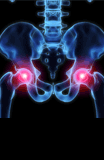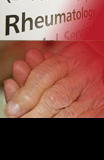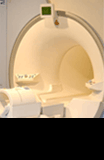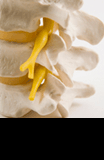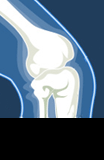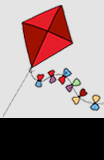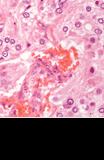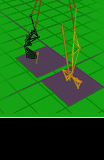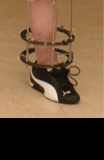Study makes important finding on lumbar punctures in newborns

Oxford researchers have found that lumbar puncture tests for newborn babies are more successful when the baby is held in a sitting position than when they lie on their side.
Oxford University Hospitals (OUH) was the main recruiting site for the NeoCLEAR study, which also received important support from SSNAP, the newborn care charity linked with OUH. The results of the research, led by Oxford Population Health's National Perinatal Epidemiology Unit (NPEU), were published in The Lancet Child & Adolescent Health.
Newborn babies are particularly susceptible to developing meningitis, but their age and size means that it can be difficult to carry out the lumbar puncture test necessary for diagnosis. Lumbar punctures involve inserting a special needle with an inner, removable stylet into a person's back to collect a sample of cerebrospinal fluid to check for signs of infection.
In 50 to 60 percent of lumbar punctures carried out in newborn babies, either no fluid is obtained or the sample is mixed with blood which makes analysis less reliable. They are usually carried out with the baby in a lying position but previous research has suggested that holding the baby in a sitting position may improve the chances of successfully collecting a sample.
The NeoCLEAR trial is the first large-scale trial to investigate lumbar puncture techniques in newborn babies; 1,082 babies and their families participated in the study. Staff at 21 newborn care units in the UK identified babies who were due to have a lumbar puncture and, if parents consented, a lumbar puncture technique was randomly selected.
The lumbar puncture techniques studied included both the position of the baby while the procedure was being carried out and the timing of the stylet removal. The primary outcome of the trial was a successful first lumbar puncture, meaning that a sample of cerebrospinal fluid with a low red blood cell count was obtained.
Dr Andy Marshall, OUH Paediatric Consultant and the study lead clinician, said: "The results of this trial should change practice in newborn care worldwide. OUH clinicians initiated and led this study, in collaboration with the University and SSNAP, our local newborn care charity. Oxford was also the main recruiting centre.
"The NeoCLEAR team are extremely grateful to all participants and their parents andcarers, as well as to all staff involved from OUH and the University, who should feel very proud of their contribution to this exciting result."
Key findings included:
- holding babies in a sitting position when carrying out a lumbar puncture was significantly more successful than a lying position. A first lumbar puncture was achieved in 346 babies (63.7 percent) in the sitting group and 307 babies (57.6 percent) in the lying down group
- infants allocated to the sitting position were less likely to show moderate-to-severe struggling at needle insertion
- babies' oxygen levels and heart rates were more stable when held in the sitting position
- timing of the stylet removal had no discernible effect on the primary outcome.
Associate Professor Charles Roehr, Clinical Director at the NPEU, said "Meningitis is a disease that can have catastrophic and even deadly consequences if not diagnosed and treated rapidly. The NeoCLEAR trial has demonstrated that holding babies in the sitting position when conducting lumbar punctures is a cost-neutral, safe, well-tolerated, and easily-learned technique that significantly improves the chances of successfully obtaining a sample, leading to earlier diagnosis and recovery.
"The results of the trial strongly support adopting the sitting technique as standard practice for newborn babies worldwide."
Unsuccessful lumbar punctures often lead to repeated attempts or management with prolonged courses of antibiotics often requiring 14 to 21 days of inpatient care because the clinical team cannot exclude a diagnosis of meningitis.
Improving lumbar puncture success rates should allow more accurate diagnosis of meningitis, prevent repeated, potentially painful lumbar punctures, and reduce unnecessary antibiotic use and hospitalisation, saving resources and improving the experiences of babies and their parents.
Picture by Hollie Santos on Unsplash




